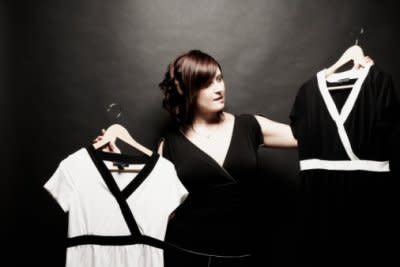Two gut-level questions to ask that will change the way you spend

Martha Beck's wise and funny column is one of the things I look forward to most in O Magazine. She is the rare bird to admit that the business of life-improvement is non-linear. Instead, it's messy, and filled with asides, tangents, and mistakes. So I was intrigued at the simplicity in her most recent column, all about two questions to ask that can guarantee a richer life.
Do I love it? Do I need it?
Beck sets forth a "matrix" of spending in which we spend the most on items that get a yes to both questions: Yes, I love it and I need it. For example, it's money well-spent when you find the perfect black wrap dress you've searched your whole life for that goes from the office to your date night with ease. You need it and you love it.
From there, the rubric goes like this: we should spend the least on the items we need but don't love (toilet paper), we shouldn't spend a dollar on things we don't need or love (another pair of candlesticks for the dining room), and any leftover money can go toward the final fun category, things we don't need but we love (a gorgeous pair of shoes).
Of course, the beauty of the spending matrix is that it will look different for everyone. Maybe you love the feel of organic zillion-ply toilet paper, collect candlesticks, and would rather shave your head than wear high heels. That's your matrix.
It's such a simple way to think about spending, that it kind of hits you over the head with it's no, duh factor.
One of the most important financial lessons many of us have learned in the past couple years is the difference between wants and needs. A tight budget will teach you that, and fast. But there's another very valuable principle at stake here, too, and that's spending your money on what's important to you. Letting your values, preferences and desires dictate the way you spend. As Beck writes, "Getting the maximum amount of joy in your life depends on listening to your true self, not fads, crazes, sales pitches or the Joneses."
This article helped remind me of a goal of mine that has somehow been pushed off to the sidelines: to have fewer things but each one something I love. Fewer clothes, but each item beloved. Fewer kitchen gadgets but each necessary (and maybe even kind of cute). The spending matrix of "Do I love it? Do I need it?" helps make space in our lives and our budgets for what really matters.
Is this a way you've intuitively approached purchases all along? Or do you think it's oversimplifying things a little too much?
More from Real-Life Makeover:
